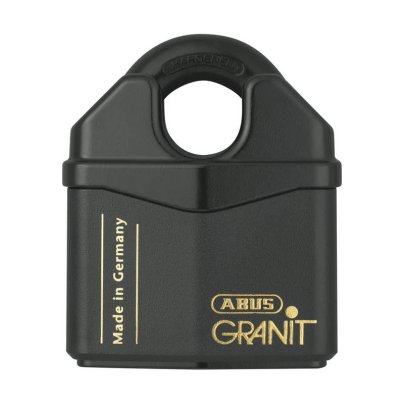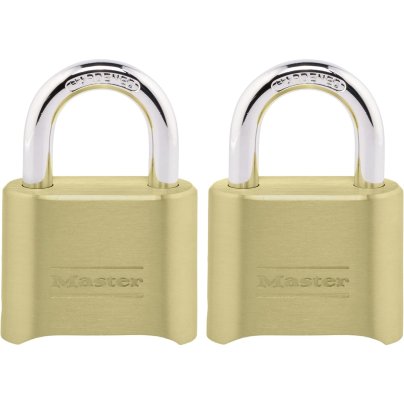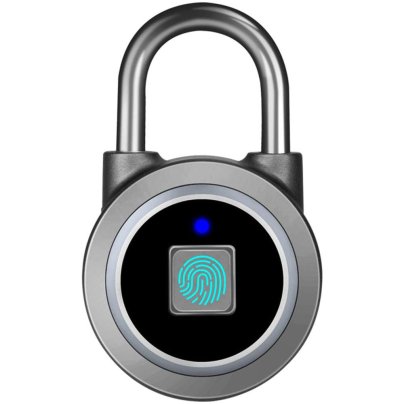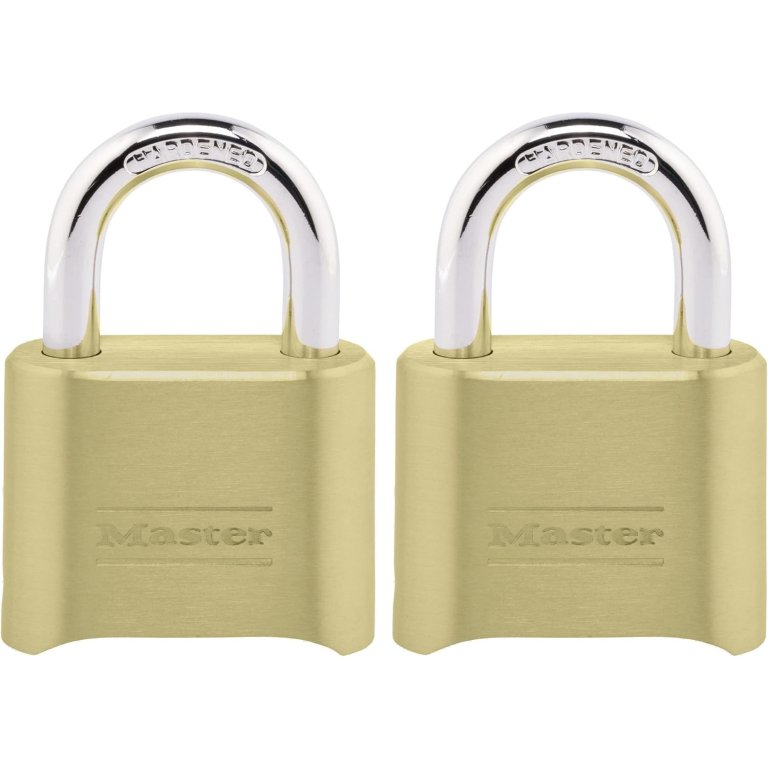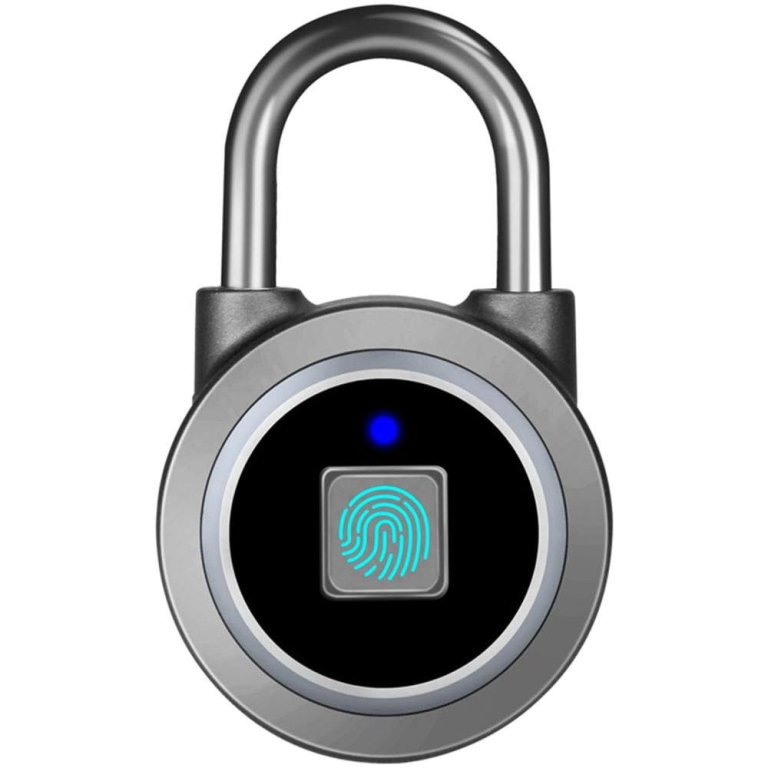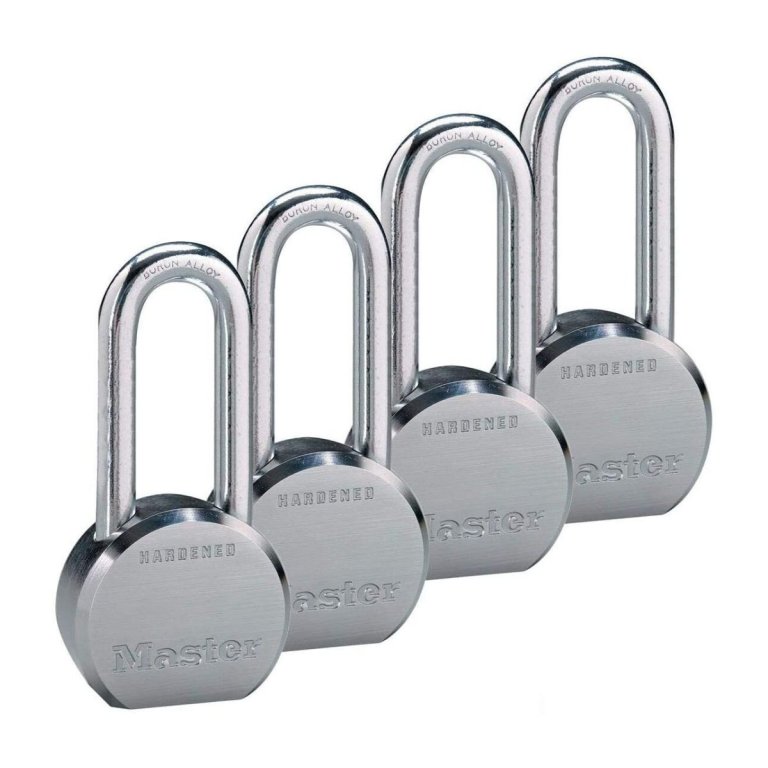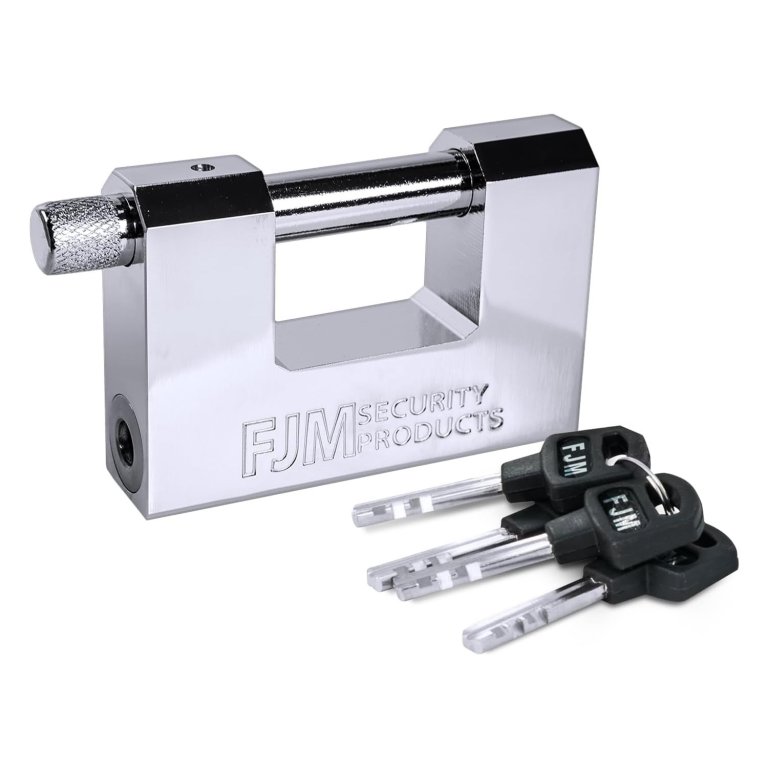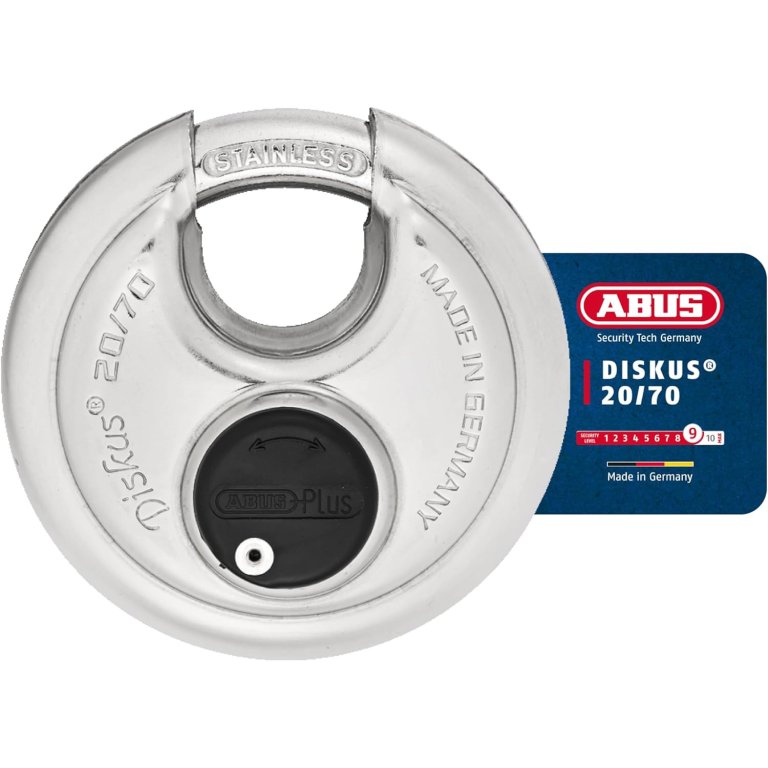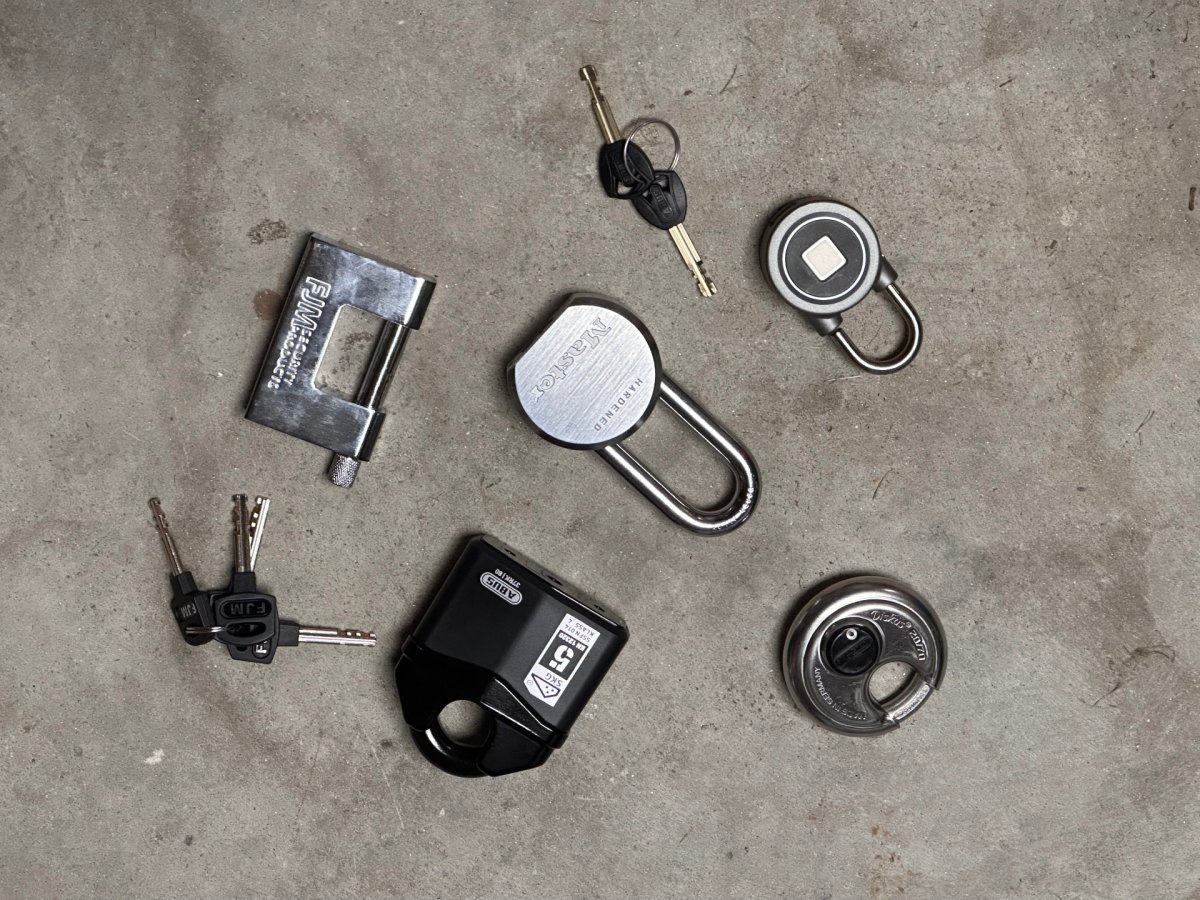
We may earn revenue from the products available on this page and participate in affiliate programs. Learn More ›
Whether renting a temporary locker at a local gym, storing items offsite, or securing a bicycle while commuting to work, you need a good padlock to keep those possessions secure. Quality matters, especially where security is concerned. A flimsy, discount padlock won’t work for long, either falling apart and exposing your property or freezing up and locking you out. The best padlocks open with their key or combination every time, giving you back your peace of mind and keeping out, well, everyone else but you.
In an effort to find the best padlocks, we tested locks from six top brands, attempting to defeat them with bolt cutters, crow bars, and saws. When our assault was over, we found the ABUS 37/80 Granit Padlock to be the best of the bunch thanks to its high tensile strength and ergonomic design. Ahead, find out more about this and the other five locks we tested, as well as what to keep in mind when shopping for the best padlock.
- BEST OVERALL: ABUS 37/80 Granit Padlock
↓ Jump to Review - BEST BANG FOR THE BUCK: Master Lock Outdoor Resettable Combination Padlock
↓ Jump to Review - BEST BIOMETRIC: Megafeis Fingerprint Padlock
↓ Jump to Review - BEST FOR FENCE GATES: Master Lock Padlock with BumpStop Technology
↓ Jump to Review - BEST FOR STORAGE UNITS: FJM Triple Chrome Plated Padlock
↓ Jump to Review - ALSO CONSIDER: ABUS Diskus 20/70 Padlock
↓ Jump to Review
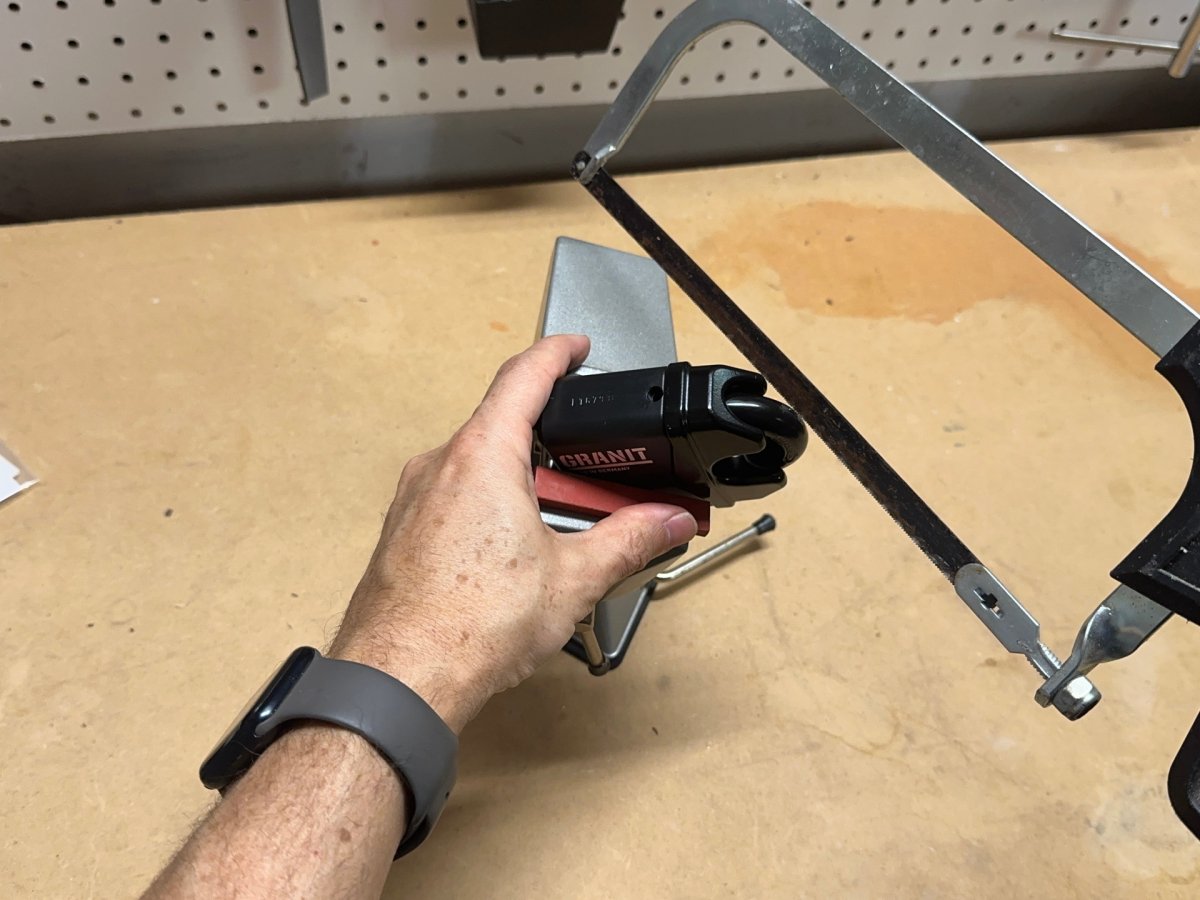
Padlocks Comparison
| Product | Type | Weight | Material |
| ABUS 37/80 Granit Padlock | Keyed | 2.31 pounds | Hardened steel |
| Master Lock Outdoor Resettable Combination Padlock | Combination | 8.5 ounces | Hardened steel with brass coating |
| Megafeis Fingerprint Padlock | Fingerprint | 3.53 ounces | Stainless steel |
| Master Lock Padlock with BumpStop Technology | Keyed | 1.68 pounds | Hardened Boron |
| FJM Triple Chrome Plated D-Shaped Padlock | Keyed | 1.07 pounds | Chrome-plated steel |
| ABUS Diskus 20/70 Padlock | Keyed | 5.6 ounces | Hardened steel |
Our Top Picks
The padlocks below are ideal for a range of purposes, whether it’s securing a suitcase, a school locker, or a garage door. Each was selected based on features, efficacy, and the brand or manufacturer’s reputation.
Best Overall
ABUS 37/80 Granit Padlock
Buy at AmazonWhat We Like
- Shrouded design makes it near impossible to pry or cut shackle
- Impervious to hammer blows
- Impervious to bolt cutters
What We Don’t Like
- Weighs more than 2 pounds
- Shackle may be too thick for some uses
Product Specs
- Type: Keyed
- Weight: 2.31 pounds
- Material: Hardened steel
Our Ratings
| Functionality | 5/5 | Durability | 5/5 | Security | 5/5 | Value | 4/5 |
This top pick is known as the “insurance lock” because it offers the minimum level of protection you need to insure property under Swedish insurance standards. With at least six tons of tensile strength, this lock is almost impossible to pry open.
The Abus Granit heavy-duty padlock even has a hardened steel anti-drill plate for additional protection, and the disc tumbler lock is bump-proof. We barely put a dent in the shackle when attempting to cut it with our bolt cutters—not that you’ll have much luck even getting the jaws of a bolt cutter around it. The Granit’s shrouded shoulders make getting the bolt cutter jaws around the shackle pretty much impossible when it’s in use. Needless to say, it was also impossible to fit our crowbar between the shackle and the hasp to attempt to pry everything apart. The high security padlock also laughed off our attempts to saw through it with a reciprocating saw, leaving the blade dull and wasted.
The Abus Granit comes with two keys that fit smoothly and turn effortlessly to release the shackle, which comes completely apart from the lock, a design that makes it easy to fit onto a hasp. While we highly recommend this padlock, there are some factors to consider. The 7/16 inch shackle won’t fit smaller hasps. And at 2.31 pounds, this padlock is considerably heavier than other padlocks. This hefty size makes it ideal for securing large gates, moving trucks, and storage units. At $132, it’s also far and away the priciest padlock we tested.
What our tester says: “It doesn’t come cheap, but if you’re looking for the max security you can get out of a padlock, this is it.”—Tony Carrick, Product Reviews tester and writer
Get the ABUS 37/80 Granit padlock at Amazon.
Best Bang For The Buck
Master Lock Brass Combination Lock
Buy at AmazonWhat We Like
- Easy to set combination
- Good weather resistance
- Defends against cutting attacks well
What We Don’t Like
- Brass coating instead of solid brass body
Product Specs
- Type: Combination
- Weight: 8.5 ounces
- Material: Hardened steel with brass coating
Our Ratings
| Functionality | 4/5 | Durability | 4/5 | Security | 4/5 | Value | 4.3/5 |
Master Locks’ affordable combination lock is designed for securing gates and sheds with its weather-proof brass finish designed to ward off the elements. The lock comes with a special key you insert and turn to set the combination. This process was simple and convenient, as it allowed us to set a combination that was easy to remember. The numbers are painted black, which makes them relatively easy to see, and each combination turns easily.
Though this lock has a smaller shackle than others we tested, it still held up to our attacks. We worked at this shackle with bolt cutters while it was locked to an outdoor gate. While we were able to put a noticeable dent into the shackle, we didn’t really come close to cutting through it. While we didn’t put this through an extended face-off with the elements, it did survive our overnight dunk test without any negative impact on performance.
We liked the build quality of this lock, but it’s important to note that the way it’s listed is a little deceiving. It’s not a “brass” lock per its listing. While Master Lock does make a version with a full brass case, this particular model only has a brass coating. During our short testing period, we found that the brass does a good job of protecting the case from the elements, but we were able to scratch the coating, which suggests that over time, it may wear off. Still, it’s an affordable option for outdoor use.
Get the Master Lock Brass Combination Lock at Amazon.
Best Biometric
Megafeis Fingerprint Padlock
Buy at AmazonWhat We Like
- Opens with a fingerprint
- Robust app for managing the lock
- Longlasting battery
What We Don’t Like
- Low degree of break-in protection
Product Specs
- Type: Fingerprint
- Weight: 3.53 ounces
- Material: Stainless steel
Our Ratings
| Functionality | 4/5 | Durability | 3/5 | Security | 3/5 | Value | 4.5/5 |
Students tired of having to keep up with a key or remember their combination to open their locker will love this fingerprint padlock. Once set up, all it takes is a finger to open the lock. It’s also Bluetooth-ready, so you can open it via the lock’s app on a smartphone.
Setting up this smart padlock involved downloading an app, creating a free user account, and programming a fingerprint. The process took us under 10 minutes, with the bulk of that time spent downloading and setting up the app. After loading a fingerprint, the lock worked reliably, opening the lock with no hesitation. Most importantly, it refused to open with an unregistered fingerprint.
While it also works via Bluetooth, the Megafeis fingerprint lock shuts off about 30 seconds after use, at which point it disconnects from the smartphone. To reconnect, you need to press the lock face to wake it up. The Megafeis app offers many ways to authorize access to the lock. You can register multiple fingerprints and assign them to users, create temporary access accounts, monitor battery level, and see a log of who unlocked the lock. The options are impressive considering its relatively low cost.
The Megafeis fingerprint lock is a light-duty small padlock. The thin shackle is susceptible to pry bars or cutting with a bolt cutter. And since it’s electronic, it’s not built to endure the elements, which limits it to indoor school locker or gym locker duties.
What our tester says: “This light-duty Bluetooth padlock packs a lot of smart features into it, making it ideal for anyone who doesn’t want to keep up with a key or remember a combination.”—Tony Carrick, Product Reviews tester and writer.
Get the Megafeiss fingerprint padlock at Amazon.
Best For Fence Gates
Master Lock Padlock with BumpStop Technology
Buy at AmazonWhat We Like
- Hardened boron shackle that resists cutting
- Added protection with bump stop technology
- Smooth operating key and shackle
What We Don’t Like
- Shackle isn’t shrouded
Product Specs
- Type: Keyed
- Weight: 1.68 pounds
- Material: Hardened Boron
Our Ratings
| Functionality | 4.5/5 | Durability | 4.5/5 | Security | 4/5 | Value | 4.3/5 |
The Master Lock Padlock with BumpStop Technology interferes with bumping, an emerging lock-picking technique, by preventing the transfer of force from the bump key to the pins. A hardened-boron alloy shackle helps to stop the lock from being cut, and a 5-pin core poses a challenge for lockpicks. Chrome rustproofing over a hardened steel body allows this long shackle padlock to be used outdoors, while still maintaining its strength over time. At 1.68 pounds, this padlock isn’t light and is a good option for a shed or motorcycle.
Masterlock’s pro series padlocks offer impressive protection. The boron alloy shackle completely resisted our attempts to cut with a bolt cutter or chew through it with a hacksaw, while the hardened steel body was impervious to hammer strikes and our efforts to drill through it. The locks are keyed alike and are rustproof, making them a great option for a fence with multiple gates.
The locks have an extra-long shackle that makes it easier to fit onto a hasp and move around to access the keyhole. Though the large shackle opening does allow for a crowbar to fit in between it and a hasp, we were unable to pry it apart that way. The lock comes with two keys, which fit smoothly into the locking mechanism and turn easily to release the shackle.
Get the Masterlock padlock at Amazon.
Best For Storage Units
FJM Triple Chrome Plated D-Shaped Padlock
Buy at AmazonWhat We Like
- Design keeps moisture out of the locking mechanism
- Difficult to access bolt with cutters or pry bar
- Key mechanism works smoothly
What We Don’t Like
- Large shackle size may not fit some hasps
Product Specs
- Type: Keyed
- Weight: 1.07 pounds
- Material: Chrome-plated steel
Our Ratings
| Functionality | 4.5/5 | Durability | 4.5/5 | Security | 4.5/5 | Value | 4.5/5 |
The straight, horizontal shackle on this D-shaped lock removes the U-shaped shackle’s exposed vulnerability. This shackle style significantly reduces weak spots on the lock, and it also sets the entrance at a horizontal angle, allowing rain and snow to slide away from the lock instead of settling within the access point.
The unique shape of this D-shaped lock made it very difficult to get a set of bolt cutters on it or even a pry bar. Once gripped with a bolt cutter, the D-shaped body also gives it tremendous strength for resisting crowbar attacks. We also attempted to saw through the body with a reciprocating saw with a hacksaw blade and also failed. The D-shape makes it a great storage unit lock.
The FJM lock comes with four keys that fit smoothly into the locking mechanism and turn easily. Once unlocked, the bolt cutter only made a small dent in the metal. You can remove the entire shackle, a design that makes it easy to attach and detach from the metal hasps you typically find on storage containers.
The triple chrome plating keeps the internal mechanisms protected against rain, snow, and even water in marine applications. At 1.2 pounds, this padlock is an ideal solution for storage lockers, and the disc tumbler lock won’t suffer from freezing temperatures.
Get the FJM padlock at Amazon.
Also Consider
ABUS Diskus 20/70 Padlock
Buy at AmazonWhat We Like
- Disc shape makes accessing the bolt nearly impossible
- Shrouded design protects from crowbar attacks
- Durable stainless steel construction
What We Don’t Like
- Locking mechanism could be smoother
Product Specs
- Type: Keyed
- Weight: 5.6 ounces
- Material: Hardened steel
Our Ratings
| Functionality | 4/5 | Durability | 4.5/5 | Security | 4.5/5 | Value | 4.3/5 |
Defeating a lock more often than not involves cutting through the shackle, which is why the design of ABUS’s Diskus lock is so effective. Once attached to a hasp, be it on a truck, storage shed, or gate lock, it’s virtually impossible to access the shackle. Try as we might, we simply couldn’t get the bolt cutter teeth onto the roughly 1 1⁄2 inches of shackle that’s exposed on this lock. Once closed, there’s very little clearance between the lock and a hasp. There’s simply no place to fit a crowbar between the shackle and the lock body. That left us to make our assault on the hefty lock body, which is made from hardened stainless steel. Needless to say, our attempts to crack it with a ball pen hammer were unsuccessful.
In terms of function, the Diskus comes with two keys that fit smoothly into the lock and turn easily. If there’s a downside to the Diskus, it’s that the small shackle and body may not fit all types of locks. The Diskus is also weather-resistant and has a plastic cover that fits over the keyhole to protect it from the elements.
Get the ABUS Diskus padlock at Amazon.
Jump to Our Top Picks
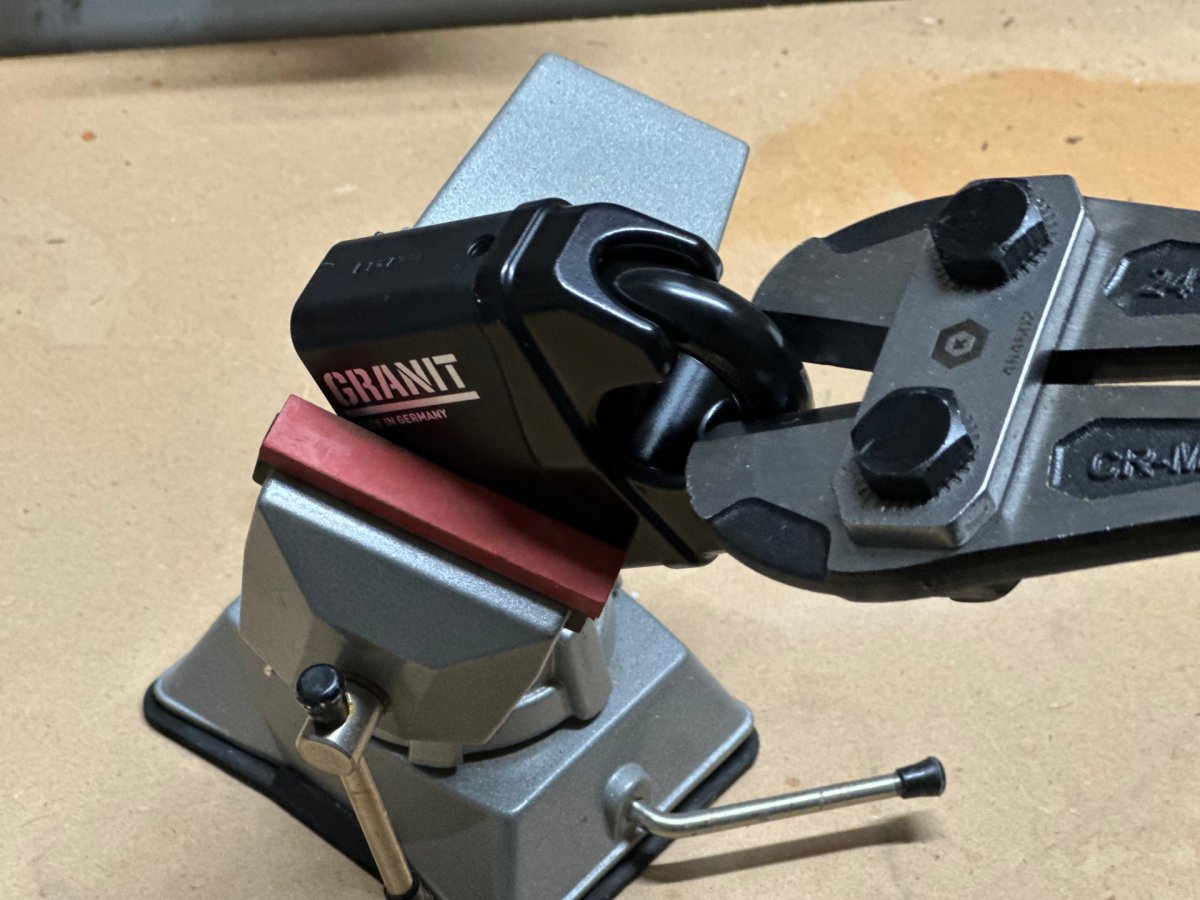
How We Tested the Best Padlocks
| Products tested | 6 |
| Time spent testing | 3.5 hours |
| Tests performed | 3 |
| Price range | $35 to $132 |
To find the best padlocks for personal and professional security purposes, we conducted hours of research and considered a number of popular models across the market. All of our picks are from brands with a reputation for making quality padlocks. We then subjected each lock to a gauntlet of tests.
With our first test, we attempted to cut through the shackle of each lock using a bolt cutter. We then tried to pry apart each lock by attaching it to a hasp and attacking it with a crowbar. Finally, we attempted to break apart the lock using a prybar in combination with a hammer.
Along with testing each lock, we also considered other factors, including how smoothly the lock mechanism opens and closes, the size and weight of the lock, and its ability to resist the elements.
| Product | Functionality | Durability | Security | Value | |
| ABUS 37/80 Granit Padlock | 5/5 | 5/5 | 5/5 | 4/5 | |
| Master Lock Outdoor Resettable Combination Padlock | 4/5 | 4/5 | 4/5 | 4.2/5 | |
| Megafeis Fingerprint Padlock | 4/5 | 3/5 | 3/5 | 4.5/5 | |
| Master Lock Padlock with BumpStop Technology | 4.5/5 | 4.5/5 | 4/5 | 4.3/5 | |
| FJM Triple Chrome Plated D-Shaped Padlock | 4.5/5 | 4.5/5 | 4.5/5 | 4.5/5 | |
| ABUS Diskus 20/70 Padlock | 4/5 | 4.5/5 | 4.5/5 | 4.3/5 |
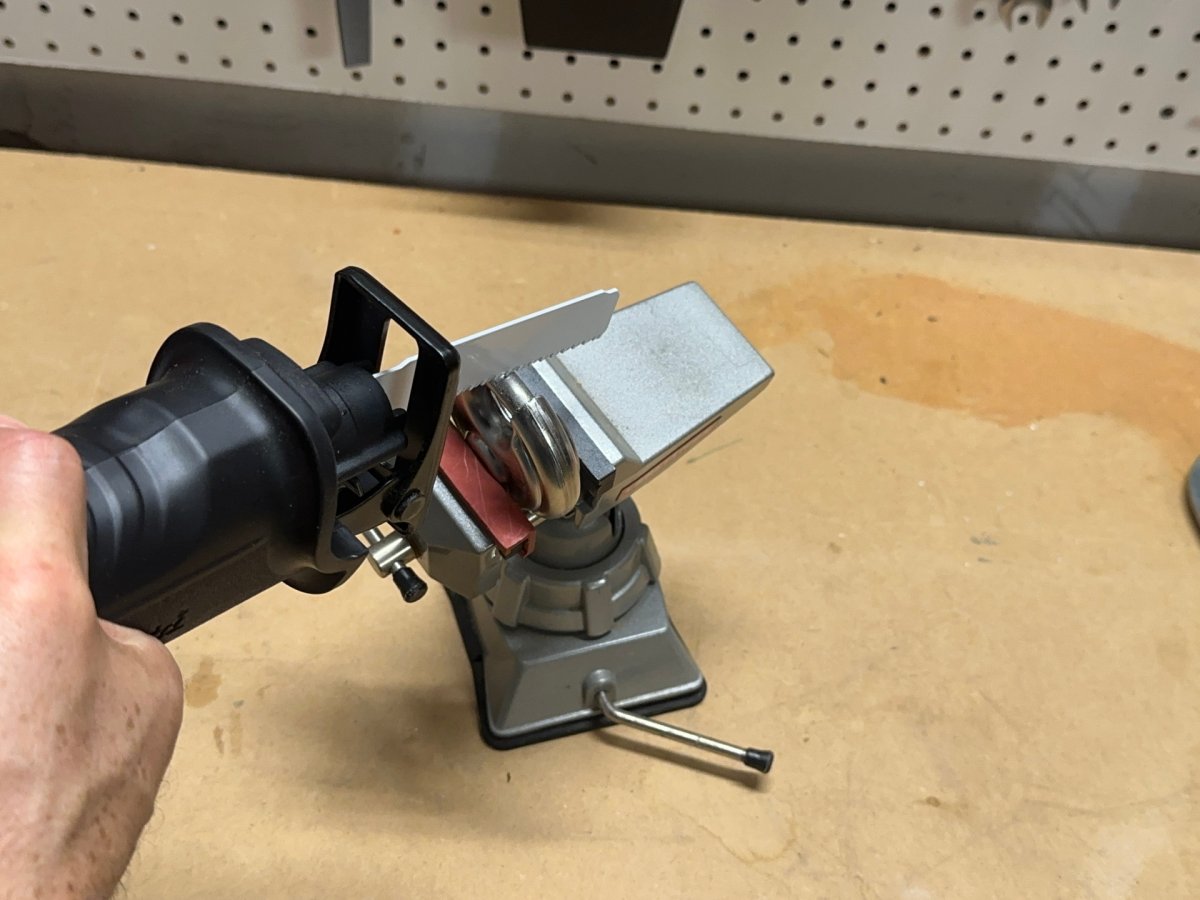
What to Consider When Choosing a Padlock
When shopping for a new padlock, it’s essential to understand the characteristics that set apart more secure models from less secure ones. While a hammer may benefit from simplicity, a padlock should have a moderate amount of complexity to keep your possessions secure. We address a few of the most prominent features to consider below.
Types of Padlocks
Padlocks come in two main standards: Keyed and combination. The type is not determined by how the padlock looks, but by the mechanism used to open the lock. As indicated by their names, you use a key to access a keyed padlock and enter a series of numbers to open a combination padlock. Beyond this simple difference, this article describes the locking mechanisms more thoroughly below.
Keyed Padlocks
Keyed padlocks require that a key be inserted into the lock to slide several locking pins into position before you can open the lock. A locking pin is a thin, metal pin that slides within the core of the padlock. Each pin must be set at a specific height by the key to turn the drum and open the lock. Keys that do not have the correct cut will not position the pins correctly, and you will be unable to open the lock.
This padlock style is the most secure against lockpicks, but you will have to keep track of the key.
Combination Padlocks
Combination padlocks use a numbered combination to rotate several cams into a position to allow the shackle to be released. Cams are small discs that have an indentation in them. The shackle is released when every cam’s indentation lines up together, and the lock opens. A shackle is the curved, metal bar that opens or locks in place.
Combination padlocks are suitable for inexpensive items that people wouldn’t go to a lot of trouble to steal, or for relatively safe areas, like a school. While you won’t have to worry about a key, overall, they are the weaker option in terms of security.
Biometric
These newer padlocks use neither a key nor a combination to open them. Instead, they have a small pad that reads fingerprints. These padlocks typically connect to a smartphone and use an app to create a registry of fingerprints that can open the lock.
Shackle Material
The shackle is the most exposed part of a padlock. As a vulnerable point on an otherwise wholly secure design, padlock manufacturers generally use a sturdy material to prevent damage. Shackle materials can include brass, stainless steel, hardened steel, hardened boron steel alloy, boron carbide, and molybdenum steel alloy.
Brass and stainless steel are lower-quality materials that offer minimal protection against impact, though stainless steel shackles are outdoor-rated due to corrosion resistance.
Hardened steel and hardened boron steel alloy are the midrange materials used to make shackles. They undergo a heat treatment to create a hardened outer layer, though some power tools can still cut through these materials.
Boron carbide and molybdenum steel alloy are the most durable and most expensive shackle materials. While you won’t have to worry about them going missing, you may be out a few dollars in the short term.
Shrouded Shoulders
Shrouded shoulders or closed-shackle padlocks have metal covers that protect the exposed shackle. The padlock’s shoulders are the metal sides that rise to cover the shackle’s left and right sides.
Padlocks that incorporate shrouded shoulders into their design are more resistant to power tools and prying bars, as the shroud prevents access to the shackle. However, this same protection can make them difficult to use, as the added bulk of the cover reduces the size of the opening on the lock. Some locks offer a removable shackle option that completely detaches from the body to allow better access and minimize this issue with the shoulders.
Number of Pins in Key
The number of pins determines the level of protection against lockpicks. As a rule, the more pins that a padlock has, the more secure the lock will be.
A key moves pins up to align the bottom portion below the shear line, and the upper part of the pin is seated above the shear line. As indicated by the name, the shear line is where the pin must sit for it to turn within the core. Once all pins align with the shear line, the drum can rotate freely within the padlock’s core.
Pin configurations can range from a simple 3-pin padlock to complex 7-pin padlocks, though most padlocks sit in the middle of the scale with a 5-pin core.
Keep in mind, people can still pick a padlock with a pin by using a hammer and a specially designed bump key. This technique is known as lock bumping; the hammer’s kinetic force transfers through the core, causing the pins to jump. A bump stop safety feature is available to block the transfer of kinetic energy, preventing this growing method of lockpicking.
Alternative protection against bumping is the disc detainer. Also called a disc tumbler lock, this combination lock features discs rotated into a particular position to release the shackle, in the same way as a dial moves the cams into position. The difference between these and regular combination locks is that the discs in a disc tumbler lock are moved by a key that has grooves to push the discs into position. These locks cannot be bumped and do not use springs, so they make great alternatives for freezing climates.
Removable Core
A removable core is excellent if you are looking for a padlock for a rental facility or storage container. You can change the center of the lock without having to replace the lock itself. The core of the lock is the internal mechanism that contains the pins and the drum.
To remove the core, you need a master key, which pushes a locking pin into an alternate shear line that disengages it from the lock, instead of turning the drum within the core. Reasons you might want to replace a core include when the lock has been damaged or tampered with, or when the lock corresponds to a key belonging to a renter who has recently given up their rental or was evicted. This ensures someone can’t use a duplicate key to re-enter the premises, and you don’t have to purchase a new lock every time you rent a space for a new person.
Anti-drill Plate
Locks can be drilled by inserting a drill bit into the lock at a specific point and applying pressure and torque with the drill to break the pins at the shear point, allowing the lock to be opened. This method of lock picking destroys the lock’s core but keeps the body intact.
An anti-drill plate is made of ceramic or hardened metal inserts. These inserts are placed into the lock to protect it from any attempt to drill the pins. The plate deflects the drill bit, or rotates within the lock, preventing the drill from gaining purchase or pushing further into the lock.
Lock Size
The bigger the lock, the more secure it is because thicker metals are more resistant to breaking. Also, larger lock bodies provide more space for additional pins or internal safety features, and internal locking mechanisms can also be larger and more robust.
However, there is one significant downside to a large lock: the weight. Some heavy-duty ones can weigh over 2 pounds on their own, making them poor substitutes for a simple locker combination lock.
Also, keep in mind that the larger a lock is, the larger the shackle diameter. If the lock is too big, it may not be able to loop through the chain or the hasp staple.
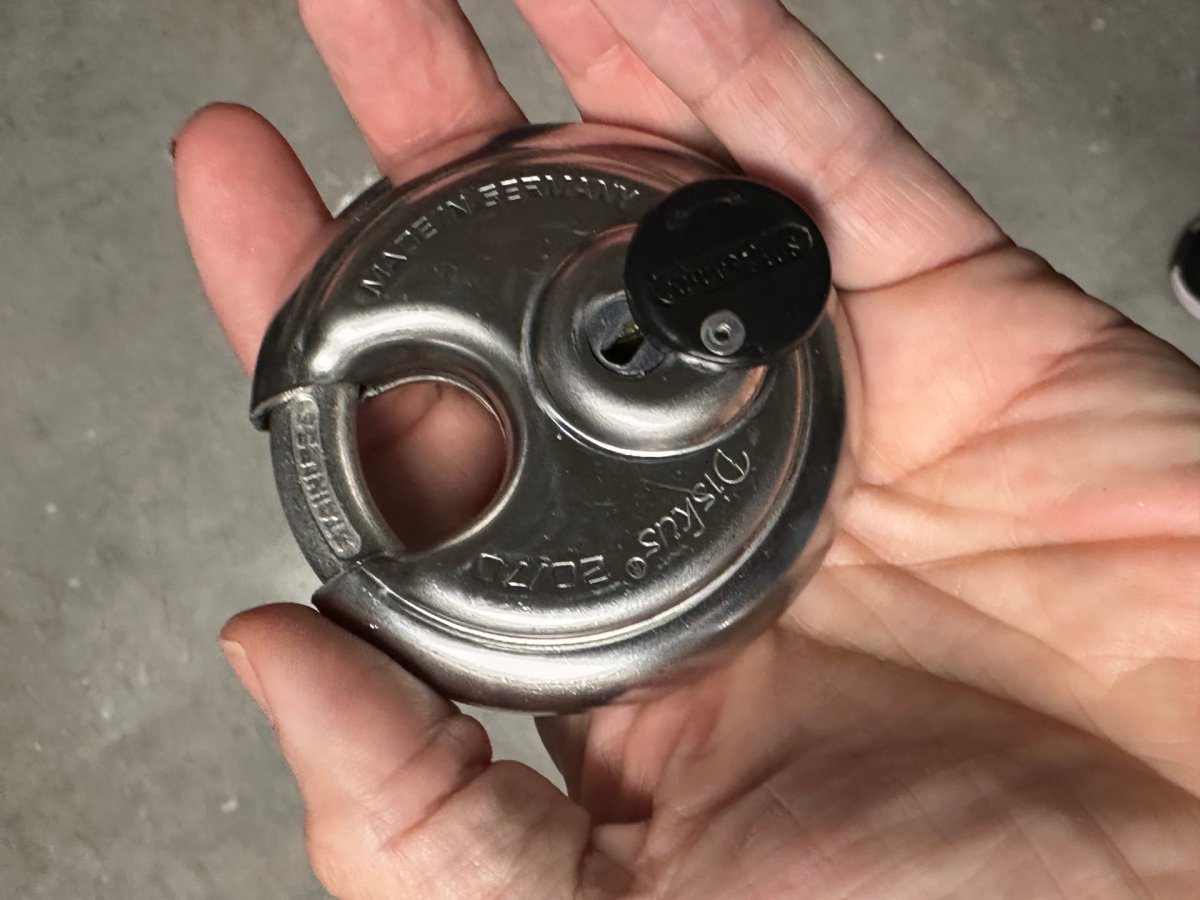
FAQs
While padlocks may seem like straightforward tools, they have a complexity that has been increasing for almost 2,000 years, which is why the intricacies can be challenging to understand. Below are common questions surrounding padlocks.
There are no locks immune to lockpicking. Locks are designed to open, so picking a lock comes down to experience with that type of lock, knowledge about the shortcomings of the lock, and the ability to create a key. The best locks are relatively unknown because the less someone understands about their functionality, the longer they will remain unpicked.
The best outdoor padlocks feature weather-resistant designs, like a hardened steel body, chrome plating, and horizontal shackles to protect the lock’s mechanisms. Straight shackle padlocks feature a flat design that doesn’t expose the locking bar to falling precipitation or water accumulation.
Though not always the case, price does generally correlate with security when it comes to padlocks. That’s because pricier padlocks are made with higher quality materials, such as hardened steel, which are more resistant to cutting, prying, and lock-picking attacks.
You can use padlocks outside, but you need to choose a padlock that’s weather-resistant so it will not rust and corrode when exposed to rain, snow, and sub-freezing temperatures. Check to see if a lock is rated for outdoor use before buying it. Locks made from brass and stainless steel or that have protective coatings are best suited for outdoor use.
Key padlocks generally offer the best security as they are less susceptible to force attacks and are harder to manipulate to open. Combination locks, however, offer convenience and allow access to multiple people as they don’t require a key. If you want maximum security, go with a keyed padlock. If you’re after convenience and you’re using the lock in a low security area, such as in a school or gym, go with a combination lock.
Hardened steel is the best material for padlocks. This type of metal resists cutting and sawing better than other softer metals. Brass is a good option for padlocks that see outdoor use, as it won’t corrode or rust like steel can.
Padlocks are a convenient, low-cost means of adding security in a variety of places. A padlock is useful for securing gates, storage units, moving trucks, gym and school lockers, and even suitcases.
Meet the Tester
Tony Carrick is a freelance writer specializing in home improvement, landscaping, technology, home security, and design. His articles have been featured on such sites as CNN Underscored, Popular Mechanics, Futurism, Pro Tool Review, and more. Having conducted rigorous product testing on home security systems and door locks, he’s well-versed in the world of home security. With each review, his goal is to help readers determine whether a product meets their needs and if it is or isn’t worth its price tag.
Additional research provided by Timothy Dale.
